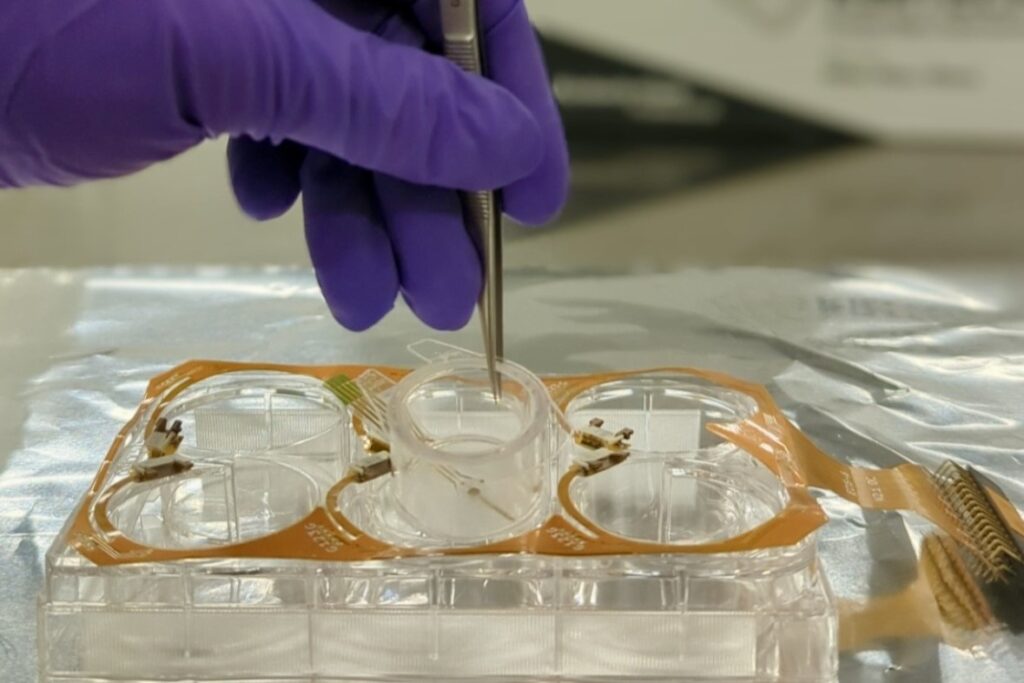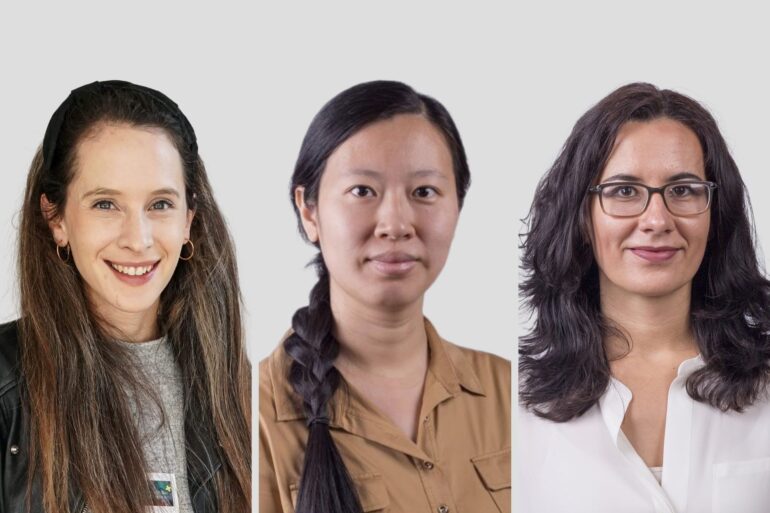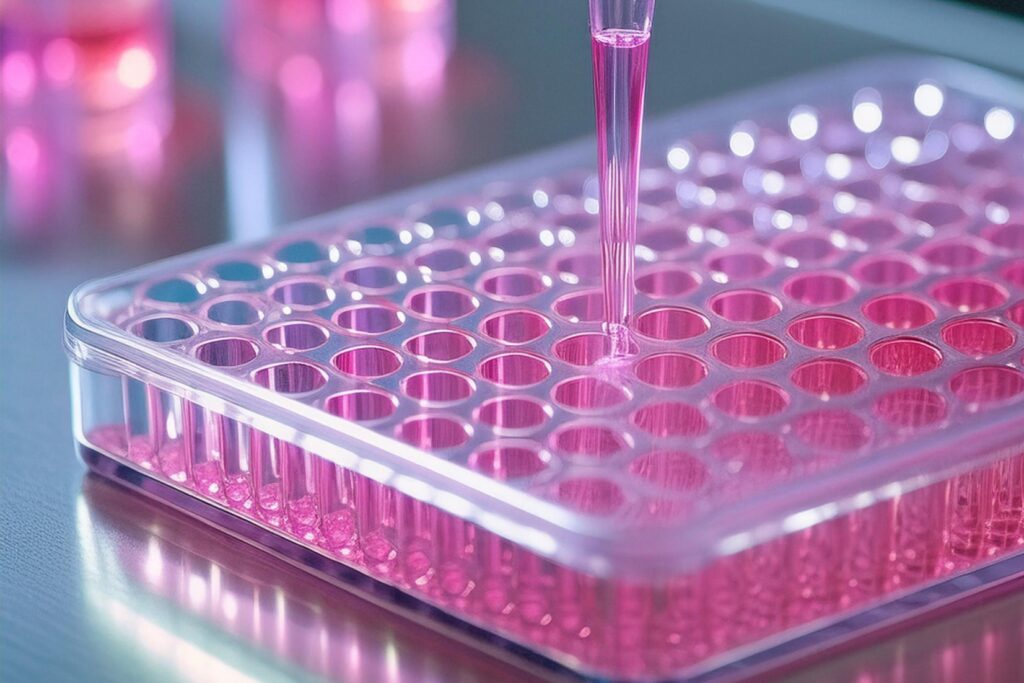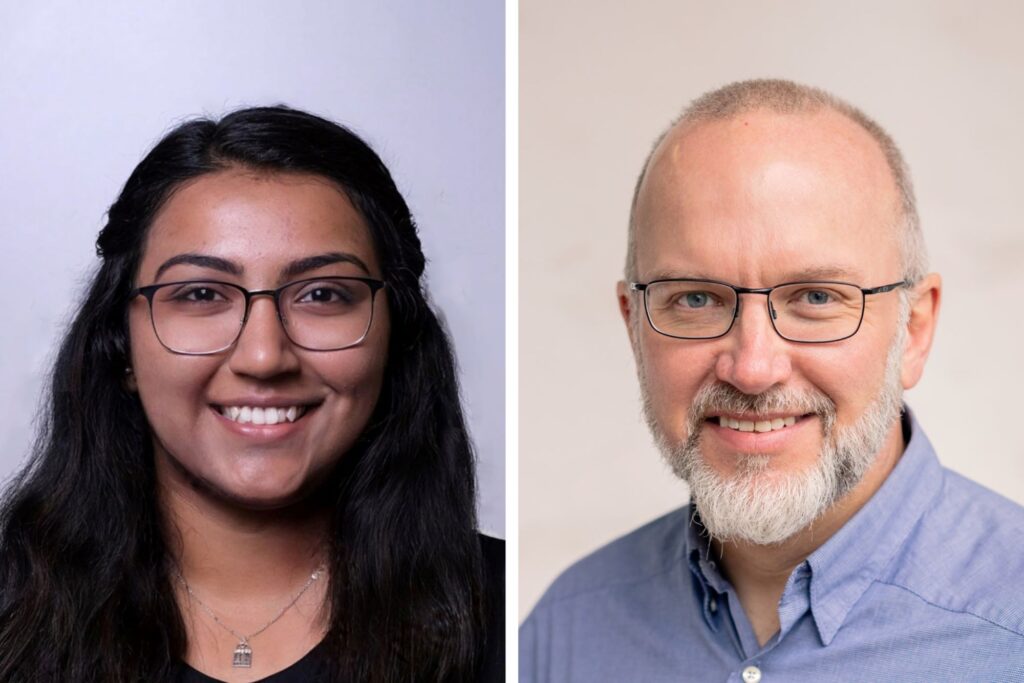Cell and Tissue Engineering
Cell and tissue engineering has the potential to change how we think about disease and aging is happening at BME. Regenerative medicine uses stem cells and biomaterials to repair, replace or regenerate damaged tissue, organ structures and function.
Check out the case studies below to learn about the exciting research done here at BME:
Biomaterials
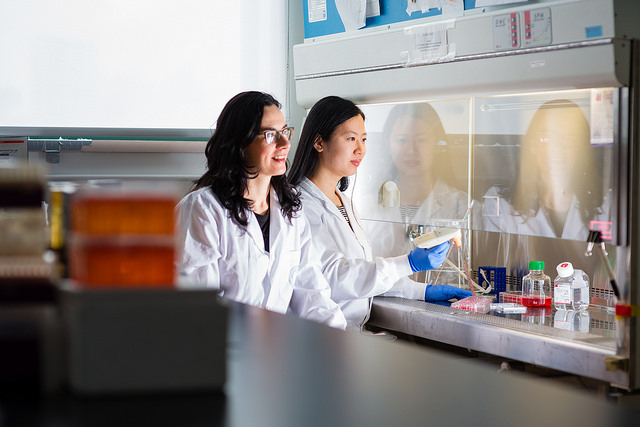
Growing heart and liver tissue for safer drug testing and more
Professor Milica Radisic’s team works on growing human tissue in artificial environments as platforms for developing and testing new drugs, and with the potential to one day, repair or replace damaged organs.
Their creations have included Biowire™, a method of growing heart cells around a silk suture, “Hook-in-Tissue,” a biocompatible scaffold that allows sheets of beating heart cells to snap together like Velcro®, and AngioChip, a system built in a normal cell culture dish that allows lab-grown heart and liver tissue to function and interact like the real thing.
Today, the team is already working on commercializing these technologies through TARA Biosystems Inc., a spinoff company co-founded by Radisic.
Tissue Engineering
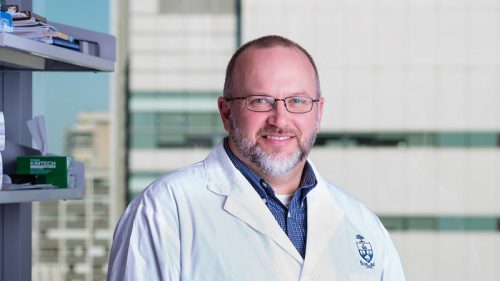
Advancing treatments for heart failure
Professor Craig Simmons leads an interdisciplinary team of eight researchers and their students from U of T Engineering, Medicine and Dentistry to advance discoveries and accelerate new treatments for heart failure and cardiovascular disease.
As the scientific director of the Translational Biology & Engineering Program (TBEP), the U of T arm of the Ted Rogers Centre for Heart Research (TRCHR), he brings together experts in engineering and medicine to uncover mechanisms of disease, develop new diagnostic tests for early detection, and create therapeutic strategies using molecules, cells and biomaterials to regenerate heart tissues.
The goal: improve the lives of one million Canadians with heart failure and reduce the estimated $3-billion cost to our health-care system.
Regenerative Medicine

Designing regenerative medicine to treat degenerative diseases
More than 100 researchers from the University of Toronto and its partner hospitals are collaborating as part of U of T’s Medicine by Design initiative to enhance fundamental discoveries and develop new therapies to treat degenerative diseases.
Led by University Professor Michael Sefton with a historic $114-million grant from the Canada First Research Excellence Fund, this initiative fosters multidisciplinary collaboration among engineers, scientists and clinicians to solidify Canada’s position as a leader in regenerative medicine, cell therapy discovery and translation.
Read more news about cell & tissue engineering
New technique improves measurement of cell barriers
Researchers at the University of Toronto have developed a novel, cost-effective method called Porous Membrane Electrical Cell–Substrate Impedance Spectroscopy (PM-ECIS) to assess the function of biological barriers in Petri dishes. In a subsequent study, the researchers characterized its sensitivity and further validated the method against a gold-standard barrier assessment technique. This new method could enhance research in fields like drug development and disease modeling.
Immune cells pave the way for advanced Heart-on-a-Chip Technology
Researchers at the University of Toronto have made strides in heart disease research by incorporating primitive macrophages—a crucial immune cell—into heart-on-a-chip technology. This innovative approach promises to enhance the functionality and stability of engineered heart tissues, potentially transforming drug testing and disease modeling.
Professor Alison McGuigan awarded Senior Scientist Award at 7th TERMIS World Congress
Professor Alison McGuigan has been honored with the prestigious Tissue Engineering and Regenerative Medicine International Society Americas Chapters (TERMIS-AM) Senior Scientist Award. This esteemed award was presented to Professor McGuigan on the final day of the 7th TERMIS World Congress Conference, held from June 25-28 in Seattle, Washington. The Senior Scientist Award is conferred upon individuals who have made significant contributions to the fields of tissue engineering and regenerative medicine.
Miniaturized assay promises faster discovery of stem cell therapies
Researchers at the University of Toronto have developed a new miniaturized assay platform, mini-MEndR, designed to evaluate muscle stem cell-mediated repair in a more efficient and scalable manner. This novel platform, funded by CFREF “Medicine by Design”, represents a significant advancement in the field of regenerative medicine, offering the potential to accelerate the discovery of therapeutic targets for muscle repair and regeneration.
New imaging technique to improve the study of heart valve disease in mice
Researchers from the Institute of Biomedical Engineering (BME) at the University of Toronto and the Translational Biology and Engineering Program in the Ted Rogers Centre for Heart Research have developed an ultrasound imaging protocol that promises to transform how congenital heart valve diseases are studied in mice. This new technique allows scientists to identify structural abnormalities in the aortic valve of juvenile mice as young as four weeks old, paving the way for more efficient, cost-effective, and humane research practices.
